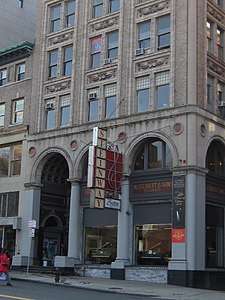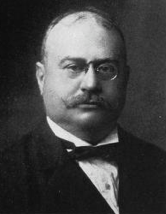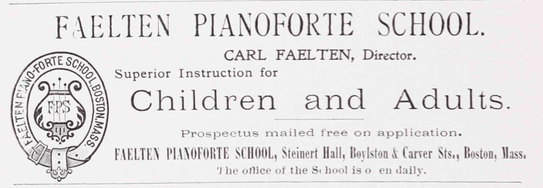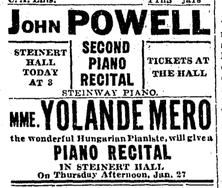Steinert Hall
Steinert Hall (est. 1896) of Boston, Massachusetts, stands at 162 Boylston Street on what was called Boston's "piano row",[1] opposite the Common in the Boston Theater District.


(1861-1933)
Piano dealers M. Steinert & Sons own the building, erected in 1896 by company employee Alexander Steinert.[2][3][nb 1] Architects Winslow and Wetherell designed the "six-story limestone and brick Beaux Arts-style facade with terra-cotta ornament and a copper cornice."[4]
Underground performance auditorium
Inside the building and four stories below ground is a concert auditorium, now closed, designed in the "Adam-style ... with fluted Corinthian pilasters separating round arches."[4] Around 1911 some considered Steinert Hall the "headquarters for the musical and artistic world of cultured Boston. Lhévinne, Josef Hofmann, Harold Bauer, Fritz Kreisler and many others have made their bows from its platform."[5]
The concert auditorium, now in ill-repair, has not been used since it was closed in 1942 due to new fire code restrictions imposed after the Cocoanut Grove nightclub fire and the prohibitive cost to upgrade the hall.[1]
In May 2015, it was announced that the hall would be renovated in an attempt to open it again for performances.[6]
Notes
- In 1883 company founder Morris Steinert relocated the firm's headquarters to Boston (by way of Georgia, Connecticut, and Rhode Island). Around 1889 "Steinert Hall" opened in Boston's Hotel Boylston, located at the corner of Tremont Street and Boylston Street; the building existed until 1894.
References
- Kahn, Joseph P., "Steinert Hall, out of use and far from sight", The Boston Globe, December 13, 2013
- Edwin M. Bacon (1916), The book of Boston, Boston, Mass: Book of Boston Co., OL 2591948M
- M. Steinert & Sons. Philosophy & History. Retrieved 2012-03-20
- Susan Southworth; Michael Southworth (2008). AIA Guide to Boston (3 ed.). Guilford, CT: Globe Pequot. ISBN 978-0-76274-337-7.
- Alfred Dolge (1911), Pianos and their Makers, v.2, Covina, Calif: Covina Publishing Company, OCLC 1199554
- "Underground Boston Theater May Come Alive Again". WBUR-FM. 24 May 2015. Retrieved 24 May 2015.
Further reading
- Coe, Joshua, "The Secret Underground Theater on Boylston Street", WECB News, Emerson College, December 5, 2013
- "Silent for decades, underground theater set to be revived", Boston Globe, May 22, 2015
Vintage advertising
 1898
1898 1903
1903 1904
1904 1916
1916
External links
| Wikimedia Commons has media related to Steinert Hall (Boston). |
- Bostonian Society. Photo of 146-162 Boylston Street, ca. 1950